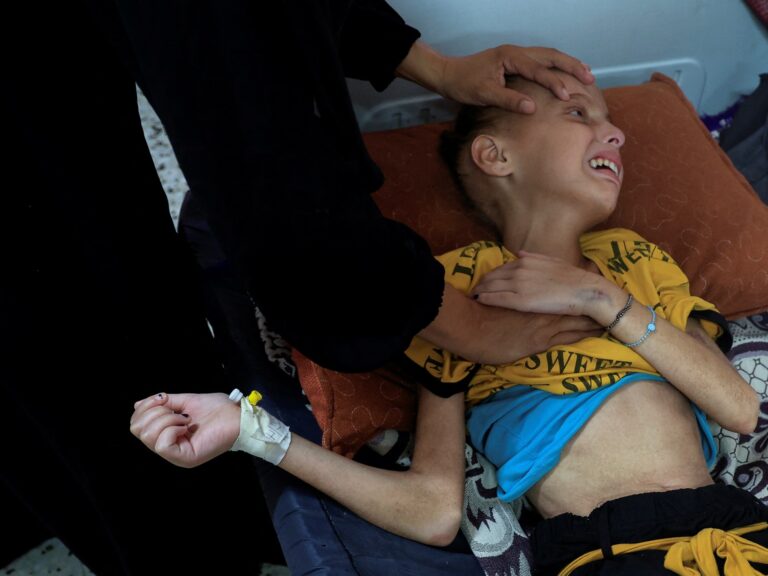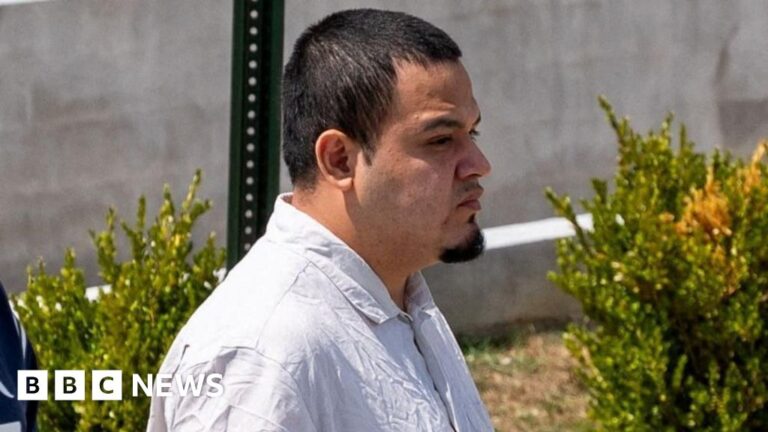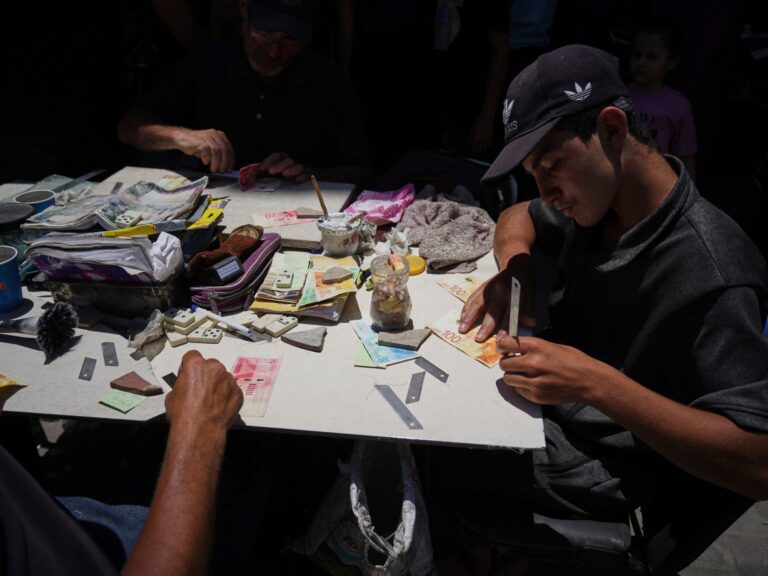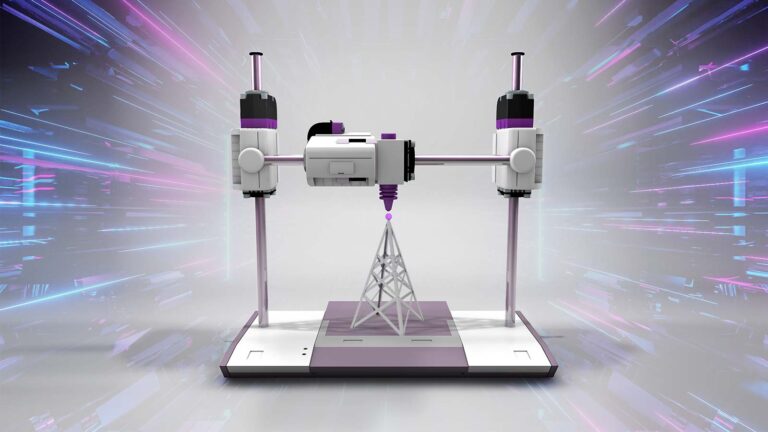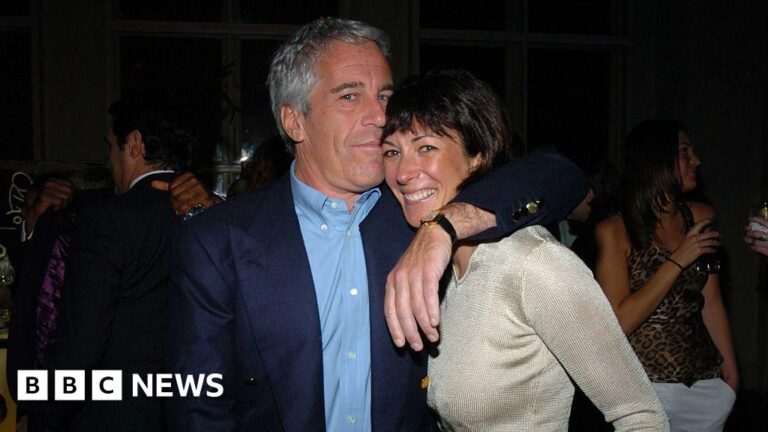North Korea leader Kim oversees firing of new air defence missiles, KCNA says
Thousands of Palestinian children in Gaza tent camps facing starvation amid Israel-Palestine conflict
Huda Abu Naja lies weak and emaciated on a thin mattress in her family’s tent in a displacement camp in central Gaza’s Deir el-Balah.
The 12-year-old Palestinian girl’s arms are painfully thin, and the bones on her torso are protruding from under her skin, a telltale sign of her acute malnutrition.
“My daughter has been suffering from acute malnutrition since March when Israel closed Gaza’s borders,” Huda’s mother, Somia Abu Naja, tells Al Jazeera, stroking her daughter’s face.
“She spent three months in hospitals, but her condition did not improve,” said Somia, explaining that she decided to bring Huda back to the family’s tent after witnessing five children die of starvation at Nasser Hospital in southern Gaza’s Khan Younis.
“She used to weigh 35 kilos [77lbs], but now she’s down to 20 [44lbs],” Somia added.
Huda is just one of hundreds of thousands of Palestinian children suffering from malnutrition in Gaza, according to local health authorities, as Israel continues to block food and other humanitarian aid from entering the bombarded enclave.
On Friday, a United Nations-backed hunger monitor confirmed for the first time that more than half a million people were experiencing famine in northern Gaza – the first such designation ever recorded in the Middle East.
The Integrated Food Security Phase Classification (IPC) system warned that the figure could reach 614,000 as famine is expected to spread to the Deir el-Balah and Khan Younis governorates by the end of September.
According to the Health Ministry in Gaza, more than 280 people, including more than 110 children, have died due to Israel-induced starvation since the country’s war on Gaza began nearly two years ago.
Children are being hit hard by the crisis, the IPC said on Friday, with an estimated 132,000 children under the age of five projected to be at risk of death from acute malnutrition by June 2026.
Dr Ahmad al-Farra, the chief paediatric physician at Nasser Hospital in Khan Younis, said 120 children are seeking treatment for malnutrition at the facility, while tens of thousands more are suffering in displacement camps with little assistance.
He told Al Jazeera that children in Gaza will suffer the consequences of malnutrition for the rest of their lives, as hospitals in the enclave are lacking the resources and supplies to respond to the crisis.
Mohammed Abu Salmiya, the director of Gaza City’s al-Shifa Hospital, also told Al Jazeera that an estimated 320,000 children across Gaza were in a state of severe malnutrition.
He said all wounded patients in hospitals were suffering from malnutrition, as well, amid Israel’s continued blockade of the enclave.
Israel has rejected the IPC’s findings, with its foreign ministry saying – despite mounds of evidence – that there was “no famine in Gaza”.
While Israel has allowed limited supplies into the territory in recent weeks amid global outrage over the starvation crisis, the UN and humanitarian groups say what is being allowed in remains woefully insufficient.
An Israeli-backed aid distribution scheme known as GHF has also been condemned as ineffective and deadly, with Israeli forces and US contractors killing more than 2,000 Palestinians as they sought food at the sites since late May.
The IPC famine classification has triggered a renewed wave of calls for Israel to urgently allow a massive and sustained influx of aid into Gaza.
UN Secretary-General Antonio Guterres said on Friday that the famine was a “man-made disaster, a moral indictment, and a failure of humanity itself”.
UN aid chief Tom Fletcher also said starvation was occurring “within a few hundred metres of food” as aid trucks were stuck at border crossings due to Israeli restrictions. He demanded that Israel allow food and medicine in “at the massive scale required”.
The Federal Reserve is growing concerned about the housing market
Wall Street was laser-focused on the Federal Reserve’s monetary policy this past week, but minutes from the central bank’s last meeting revealed concern among some policymakers about the housing market.
As the sector’s slump drags on, it has triggered more alarm bells because activity in housing, such as residential investment and construction, has often served as a leading indicator on the overall economy.
Minutes from the Fed’s earlier meetings didn’t include such concerns. But that changed during the July 29-30 gathering.
“Participants observed that growth of economic activity slowed in the first half of the year, driven in large part by slower consumption growth and a decline in residential investment,” the minutes, which were released on Wednesday, said.
To be sure, housing was just one of several concerns that policymakers raised. Others included the labor market, the effect of tariffs on inflation, real income growth, elevated asset valuations, and low crop prices.
But Fed officials were also specific about their housing market worries, suggesting they were starting to pay more attention to the data.
“A few participants noted a weakening in housing demand, with increased availability of homes for sale and falling house prices,” the minutes said.
And not only did housing show up on the Fed’s radar, policymakers flagged it as a potential risk to jobs, along with artificial intelligence technology.
“In addition to tariff-induced risks, potential downside risks to employment mentioned by participants included a possible tightening of financial conditions due to a rise in risk premiums, a more substantial deterioration in the housing market, and the risk that the increased use of AI in the workplace may lower employment,” the minutes added.
Housing market data
The fact that the housing market is emerging as a worry at the Fed means that it could also weigh more on rate decisions, which influence mortgage rates.
In his Jackson Hole speech on Friday, Chairman Jerome Powell opened the door to a rate cut at the central bank’s meeting in September after months of maintaining a more hawkish stance, stoking a furious rally on Wall Street and sending the 10-year Treasury yield down sharply.
But in the meantime, fresh data show that the housing market remains stuck as elevated borrowing costs have kept would-be buyers on the sidelines.
Sales of existing homes rose in July but have largely been flat for most of the year, even as the number of listings has climbed, suggesting demand is weak. That’s suppressed home prices, with a gauge of median prices falling in all but one month this year.
“Weekly data suggests home prices may remain subdued in coming months, close to flat on the year or rising only very modestly,” analysts at Citi Research wrote on Thursday. “Home price declines are rare outside of hiking cycles or recessions.”
In addition, construction of new single-family homes remains lethargic, and data for July showed that building permits have declined in six out of seven months this year. In fact, permits—a volatile but leading indicator of future activity—fell to the lowest level since 2019, excluding the pandemic.
That was reflected in the NAHB homebuilder confidence index, which fell in August to reverse a modest uptick earlier. It also showed that the share of homebuilders offering sales incentives hit a post-pandemic high.
“As housing demand remains weak with high mortgage rates and high home prices, we expect further softening in housing activity this year,” Citi said in a separate note on Tuesday.
US government seeks to expel Kilmar Ábrego García to Uganda
Less than 24 hours after his release, US authorities have informed Kilmar Ábrego García that he may be deported to Uganda, following his refusal to accept a plea deal in a pending criminal trial, his lawyers say.
Attorneys for Mr Ábrego García say he declined an offer to plead guilty to human smuggling charges in exchange for deportation to Costa Rica – a deal proposed after it became clear he would be released from custody on Friday.
Mr Ábrego García, a Salvadoran national, was mistakenly deported to El Salvador in March by the Trump administration and then brought back to the US on criminal charges.
Officials allege Mr Ábrego García has ties with MS-13 criminal gang, a charge he has denied.
The deal to be sent to Costa Rica was offered on Thursday after it became clear Mr Ábrego García would likely be freed from a Tennessee jail on Friday.
The Costa Rican government agreed to accept him as a refugee and provide him legal status there, a letter from a Costa Rican official included in the legal filing says.
His attorneys now say that upon Mr Ábrego García release from federal custody, they were informed of the government’s intention to deport him to Uganda – a country with which he has no known ties.
“There can be only one interpretation of these events,” they wrote in the filing. “The DOJ, DHS, and ICE are using their collective powers to force Mr. Abrego to choose between a guilty plea followed by relative safety, or rendition to Uganda, where his safety and liberty would be under threat.”
Mr Ábrego García, now in Maryland with his family, is scheduled to appear in a Baltimore court on Monday. If a judge approves the government’s request, he could face deportation within days.
The US has reached bilateral deportation agreements with Honduras and Uganda as part of its crackdown on illegal immigration, according to documents obtained by the BBC’s US partner CBS.
“This is a temporary arrangement with conditions including that individuals with criminal records and unaccompanied minors will not be accepted,” Bagiire Vincent Waiswa, permanent secretary to the Ugandan foreign ministry, said in a statement.
“Uganda also prefers that individuals from African countries shall be the ones transferred to Uganda.”
Mr Ábrego García’s deportation case has become a fixture of the Trump administration’s crackdown on immigration.
He was deported to his native El Salvador in March, and initially kept in the notorious Cecot prison. But after US government officials acknowledged he was deported due to an “administrative error”, a judge ordered the administration to “facilitate” his return.
He was returned to the United States in early June and sent to the state of Tennessee, where he was charged in a human smuggling scheme. He has pleaded not guilty to the charges.
In late June, a federal judge in Tennessee had ruled that Mr Ábrego García was eligible for release, but remained in jail over fears from his own legal team that he could be swiftly deported again if he left the facility.
HYBE label appoints second new CEO in a year after Min Hee-Jin departure
HYBE-owned label ADOR, which manages the K-pop group NewJeans, has appointed Lee Do-kyong as Chief Executive Officer, replacing Kim Ju-young after just a year.
That’s according to multiple news outlets out of South Korea on Wednesday (August 20), which reported that Lee joined HYBE in 2019 when it was still known as Big Hit Entertainment.
The Korea Herald reports that Lee helped shape corporate strategy and spearheaded new business ventures before taking charge of HYBE’s IPX division — which manages merchandise, immersive spaces and global licensing — in 2022.
Her responsibilities included overseeing merchandise operations, pop-up stores, and light stick operations across HYBE’s artist roster. One of Lee’s projects was “The City,” a fan experience program that extended artist branding throughout entire cities hosting HYBE concerts.
ADOR said in a statement cited by Korea Herald: “Having deemed the previous restructuring goals achieved, the board is now moving to an operational model focused on quickly supporting artists’ activities and driving business expansion.”
“Having deemed the previous restructuring goals achieved, the board is now moving to an operational model focused on quickly supporting artists’ activities and driving business expansion.”
ADOR
Lee succeeds Kim, who was appointed as CEO of ADOR in August 2024, replacing ADOR co-founder Min Hee-Jin amid a corporate power struggle. Min, who launched ADOR and developed NewJeans, was ousted following allegations that she attempted to seize control of the subsidiary from HYBE.
In a public letter issued in November, Min alleged that HYBE’s actions against her were retribution for her attempt to blow the whistle on misconduct within the K-pop giant.
The dispute continues in South Korean courts, with HYBE recently saying that it plans to appeal a decision by police not to file charges against Min.
“After more than a year of investigation, the police decided today not to forward either of HYBE’s complaints to prosecutors, having found no evidence of wrongdoing,” Min’s legal team said in a statement on Tuesday (July 15), as quoted in the Korea Times.
In response, HYBE said in a press release, as quoted at Korea JoongAng Daily: “There have been new developments made in the case after police investigations, such as the NewJeans members arguing that their contracts are invalid.”
“We have handed in numerous pieces of new evidence to court in related suits. The court has made firm decisions against Min based on such evidence and the Seoul High Court even deemed that Min is ‘intentionally sabotaging the very basis of an exclusive contract.’”
Separately, ADOR also faced a legal battle against NewJeans. In June, NewJeans failed to challenge a court injunction preventing them from pursuing independent activities without approval from ADOR, effectively ending their appeals process after missing a deadline.
The group, which has performed under the name NJZ since February, did not file an appeal to South Korea’s Supreme Court by the June 24 deadline. On May 30, the court warned NewJeans that they would be ordered to pay 1 billion South Korean won (USD $715,580) per member for each unauthorized activity outside their agency’s control, potentially totaling 5 billion won ($3.6 million) if all five members perform together.
Last month, NewJeans signaled their willingness to reconcile with ADOR, but only if the label returns to resembling the agency “that the members signed with”, their legal reps were quoted by Korea JoongAng Daily as saying on July 25.
The group’s legal reps said: “The root of this entire conflict lies in the audit launched by HYBE in April last year.” The said audit targeted Min.
Music Business Worldwide
The consequences of money’s demise in the Israel-Palestine conflict
You try to buy a kilo of flour in Gaza.
You open your wallet; what’s inside? A faded 10-shekel note, barely held together by a strip of tape. No one wants it; it is all rubbish now.
The 10-shekel note, normally worth about $3, was once the most commonly used bill in daily life. Now, it is no longer in circulation. Not officially—only practically. It has been worn out beyond recognition. Sellers will not accept it. Buyers cannot use it.
There is no fresh cash. No replenishment.
Other banknotes are following the fate of the 10 shekels, especially the smaller ones.
If you pay with a 100-shekel note for an 80-shekel purchase, the seller will likely be unable to return the remaining 20 due to the poor physical state of the banknotes.
Many notes are torn or taped together, and entire stalls now exist just to repair damaged currency so it can be used again. Anything is better than nothing.
But the disintegration of banknotes is not the only problem we have in Gaza.
Civil servants have gone months without pay. NGOs are unable to transfer salaries to their employees. Families cannot send remittances. What once supported Gaza’s financial structure has vanished. There is no mention of when it will return. Just silence.
Money is stuck. Trapped behind closed systems and political barriers.
If you manage to obtain money from outside sources — perhaps from a cousin in Ramallah or a sibling in Egypt — it comes at a cost. A brutal one. If you get sent 1,000 shekels ($300), the agent will hand you 500. That’s right, the commission rate on cash withdrawals in Gaza is now 50 percent.
There are no banks to offer such withdrawals or oversee transfers.
The signs are still there. Bank of Palestine. Cairo Amman Bank. Al Quds Bank. But the doors are shut, the windows are dusty, and the inside is empty. No ATMs work.
There are only brokers, some with connections to the black market and smugglers, who are somehow able to obtain cash. They take huge cuts to dispense it, in exchange for a bank transfer to their accounts.
Every withdrawal feels like theft disguised as a transaction. Even so, people continue to use this system. They have no choice.
Do you have a bank card? Great. Try using it?
There is no power. There’s no internet. No POS machines. When you show your card to a seller, they shake their head.
People print screenshots of account balances that they cannot access. Some walk around with expired bank documents, hoping someone will think they’re “good enough” as a pay guarantee.
Nobody does.
There are a few sellers who accept so-called “digital wallets”, but those are few, and so are people who have them.
In Gaza today, money you can’t touch is equivalent to no money at all.
And so people have to resort to other means.
At the market, I saw a woman standing with a plastic bag of sugar. Another was holding a bottle of cooking oil. They did not speak much. I just nodded. Traded. Left.
This is what “shopping” in Gaza looks like right now. Trade what you’ve got. A kilo of lentils for two kilos of flour. A bottle of bleach for some rice. A baby’s jacket for several onions.
There is no stability. One day, your item will be worth something. The next day, nobody wants it. Prices are guesses. Value is emotional. Everything is negotiable.
“I traded my coat for a bag of diapers,” my uncle Waleed, a father of twins, told me. “He looked at me as if I were a beggar. I felt like I was giving up a part of my life.”
This is not a throwback to simpler times. This is what happens when systems disappear. When money dies. When families are forced to sacrifice dignity for survival.
People don’t just suffer—they shrink. They lower their expectations. They stop dreaming. They stop planning. What future can you plan when you can’t afford tomorrow?
“I sold my gold bracelet,” Lina, my neighbour by tent, told me. “It was for emergencies. But now, every day is an emergency.”
Gaza’s economy did not collapse due to bad policy or internal mismanagement. It was broken on purpose.
The occupation has not just blocked goods entering Gaza; it has also blocked currency and with it, any sense of financial control. It has destroyed the banking system. It has made liquidity a weapon.
Cutting off Gaza’s money is part of a larger siege. There is no need to fire a bullet to destroy a people. Simply deny them the ability to live.
You can’t pay for bread, for water, for medicine, so how do you sustain life?
If this trend continues, Gaza will be the first modern society to completely return to barter. There are no salaries. There is no official market. Only personal trades and informal deals. And even those will not last forever. Because what happens when there is nothing left to trade?
If this isn’t addressed, Gaza will be more than just a siege zone. It will be a place where the concepts of money, economy, and fairness will die forever.
The views expressed in this article are the author’s own and do not necessarily reflect Al Jazeera’s editorial stance.
Challenging Client
A required part of this site couldn’t load. This may be due to a browser
extension, network issues, or browser settings. Please check your
connection, disable any ad blockers, or try using a different browser.
Top 20 Rankings for the Mid-Atlantic Region in the 2025 Preseason

2025 MID-ATLANTIC REGION HIGH SCHOOL
PRESEASON TOP 20 RANKINGS
| Rank | School Name | City, State |
|---|---|---|
| 1 | Trinity Episcopal Academy | Richmond, Virginia |
| 2 | Bryn Mawr School | Baltimore, Maryland |
| 3 | Collegiate School | Richmond, Virginia |
| 4 | Norfolk Academy | Norfolk, Virginia |
| 5 | Cape Henlopen High School | Lewes, Delaware |
| 6 | Tabb High School | Yorktown, Virginia |
| 7 | Nansemond River High School | Suffolk, Virginia |
| 8 | Archbishop Spalding High School | Severn, Maryland |
| 9 | First Colonial High School | Virginia Beach, Virginia |
| 10 | Independence High School | Ashburn, Virginia |
| 11 | Frank W. Cox High School | Virginia Beach, Virginia |
| 12 | Oakton High School | Vienna, Virginia |
| 13 | Cary Christian School | Cary, North Carolina |
| 14 | Bishop O’ Connell High School | Arlington, Virginia |
| 15 | Garrison Forest School | Owings Mills, Maryland |
| 16 | Smyrna High School | Smyrna, Delaware |
| 17 | Notre Dame Prep | Towson, Maryland |
| 18 | Loudoun Valley High School | Purcellville, Virginia |
| 19 | Crofton High School | Gambrills, Maryland |
| 20 | Broadneck High School | Annapolis, Maryland |
| OC | Cardinal Gibbons High School | Raleigh, North Carolina |
| OC | Delmar High School | Delmar, Delaware |
| OC | Fairfax High School | Fairfax, Virginia |
| OC | Gloucester High School | Gloucester, Virginia |
| OC | Leonardtown High School | Leonardstown, Maryland |
| OC | St. John’s College High School | Washington, District of Columbia |
The post 2025 Preseason Mid-Atlantic Region Top 20 Rankings appeared first on MAX Field Hockey.
Innovative Method Enables 3D Printing of 5G and 6G Antennas
On this page, we have spoken on multiple occasions about the potential of 5G, which is quickly becoming a standard in developed countries. The benefits are undeniable, from the reduced latency that will support driverless vehicles to the coverage of millions of devices per square mile driving the Internet of Things. However, not everyone benefits at the same rate. Getting the most disadvantaged and remote areas to participate in these advances is the goal of a project at the University of Sheffield in the United Kingdom.
What are the main 5G infrastructures and bands?
The deployment of 5G networks requires substantial investments in radio spectrum and hardware in the form of antennas. So much so that implementation is gradual, with two types of architecture:
- Non-Stand Alone Architecture (NSA), which takes advantage of the existing 4G infrastructure, although with limited functionalities. Thus, they have a latency of 15 ms and speeds of up to 2 Gbps.
- Stand Alone (SA) architecture, which will enable the full potential of 5G to be realized, including latencies of 1 ms and transmission speeds of up to 20 Gbps.
Besides the hardware side of things, 5G antennas are also classified by the bands in which they operate.
- Sub-6, which operate below 6 GHz, typically between the 3.4 GHz and 3.8 GHz frequencies. These are used in urban environments, as they suffer less interference from physical or climatic obstacles.
- mmWave or millimeter wave, which operate between 24 GHz and 100 GHz. These frequencies offer higher speed and lower latency but require a more significant number of repeaters to compensate for the lack of penetration. This is the type of frequency that will be used as a priority in 5G SA infrastructures.
3D Printing of 5G and 6G Antennas
As seen, mmWave antennas will be crucial to take full advantage of this technology. And those are the 3D-printed devices developed by the Department of Electronic and Electrical Engineering at the University of Sheffield. The British university has just demonstrated the feasibility of 3D-printed 5G and 6G antennas, radically reducing cost and production times.
Thus, the new technique uses silver nanoparticles to print antennas in a few hours at the cost of just a few dollars, all without sacrificing functionality. In comparison, traditional 5G mmWave antennas can cost hundreds of euros, with much slower manufacturing.
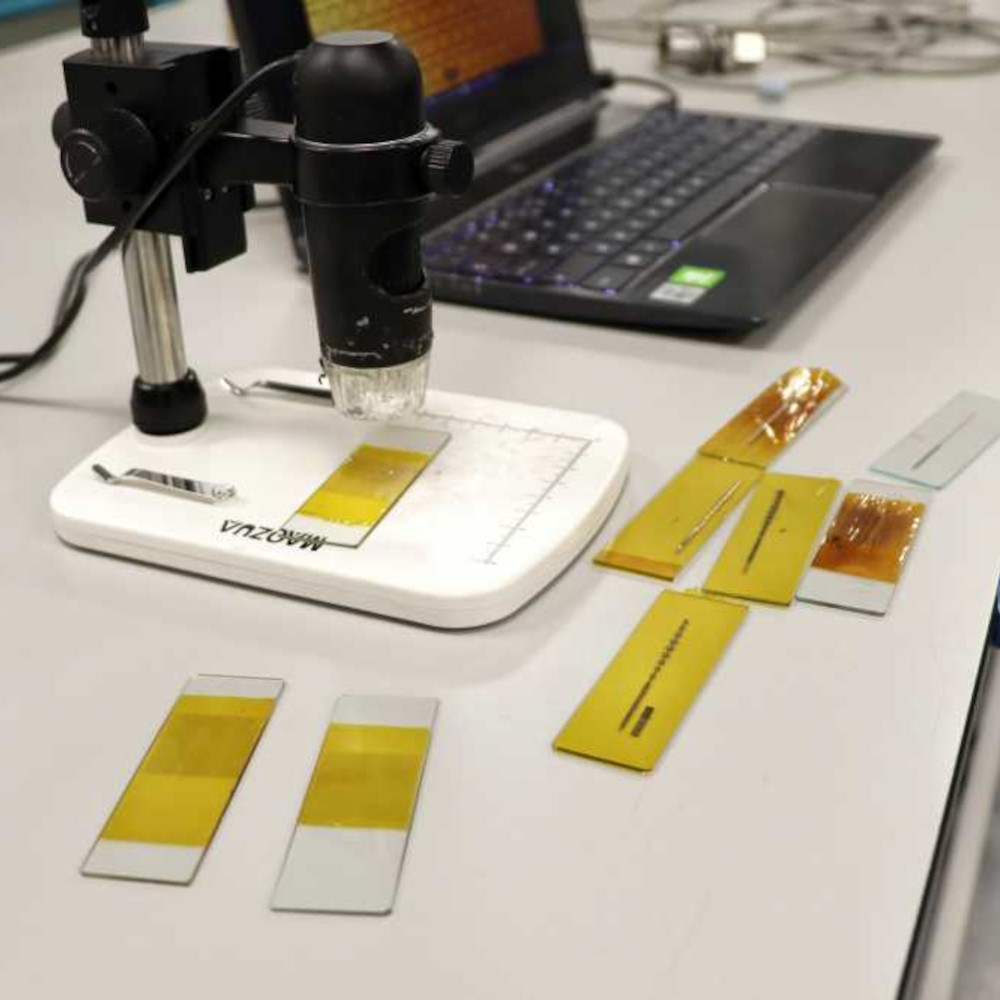
The developers point out that the new design will make it possible to produce large-scale, low-cost antennas to reach remote areas and provide coverage quickly and efficiently. Criteria such as miniaturization, speed of manufacture, low cost, and ease of installation define the usefulness of this type of technology in developing countries.
Projects like this solar desalination plant developed by MIT bring technology, energy, and water to underprivileged areas. This is also the raison d’être of the Acciona Foundation, which carries out projects to take water or clean energy to unreached areas, such as Oaxaca or the tropical forests of Peru. Undoubtedly, energy technology and infrastructure advances are one of the keys to developing these areas.
A new age of additive manufacturing electronics
We have already seen that 3D printing has a wide range of applications, including metals and biomaterials. In recent years, the shortage of microchips due to problems in logistic chains caused by the pandemic and war conflicts has been a constant. And here, 3D printing could also play a crucial role.
Additive manufacturing electronics (AME) enable 3D printing to produce semiconductors, sensors, transistors, and other computer components, wearables, and circuitries.
A concrete example in this field is a project at the University of Washington, which has created a thermoelectric device that converts body heat into electricity. They have used a 3D printing system that generates different layers with specific functionalities to achieve this.
Thus, a liquid metal alloy filler is used that gives the wearable conductivity while simultaneously allowing it to stretch. The device also contains microspheres that transmit heat to the semiconductors in the base layer. According to the researchers, this type of wearable can be printed on textiles and curved surfaces.
Additive manufacturing electronics is a technique with great potential. So much so that some studies suggest it could quadruple in value over this decade, reaching almost $40 billion by 2030.
Source:
US Justice Department releases transcripts of Ghislaine Maxwell’s interview
Ghislaine Maxwell, the jailed associate of sex offender Jeffrey Epstein, has told US officials she did not witness any inappropriate conduct by Donald Trump or former President Bill Clinton.
The Trump administration has faced pressure to disclose information about Epstein, who the US president was previously friendly with.
Maxwell was interviewed from prison in July and, according to the newly released transcript, told Deputy Attorney General Todd Blanche that a much-discussed Epstein “client list” does not exist.
She also called allegations of Prince Andrew having sexual relations with an underage girl in Maxwell’s home “mind-blowingly not conceivable”.
Maxwell is seeking a pardon from Trump and has been accused of lying to federal officials.
Shortly the interview with Blanche – who previously worked as Trump’s personal attorney – she was moved from her from a Florida prison to a new minimum-security facility in Texas. It is unclear why the move was made.
She is currently serving a 20-year sentence in a sex-trafficking scheme, and has petitioned the US Supreme Court to overturn her conviction. Her lawyer has said they would “welcome” a pardon from the president.
The White House has been adamant that “no leniency is being given or discussed” in Maxwell’s case.
Trump has maintained that he fell out with Epstein in 2004.
The president has accused his political opponents of using the case to distract from what he sees as his administration’s victories.
But he has also faced pressure from his own Republican Party for more transparency around investigations of Epstein.
In the transcripts – which amount to 300 pages, some heavily redacted – Maxwell said that while she believed Trump and Epstein were friendly “in social settings”, she did not think they were close friends.
“I actually never saw the president in any type of massage setting,” she said – alluding to the massage services that some Epstein victims have mentioned. “The president was never inappropriate with anybody.”
“In the times I was with him, he was a gentleman in all respects,” she added.
She also said she did not recall Trump sending Epstein a 50th birthday note in 2003, which drew recent headlines after the note was reported in the Wall Street Journal.
In the interview, Blanche also asked Maxwell about the alleged “client list” of high-profile personalities that has become the object of conspiracy theories in recent years.
Maxwell was asked about several well-known figures, including Bill Gates, Elon Musk, former Israeli Prime Minister Ehud Barak, Health and Human Services Secretary Robert F Kennedy Jr, actor Kevin Spacey, model Naomi Campbell and Prince Andrew – whom she denied she introduced to Epstein.
The list of his high-profile associates had become a focal point for conspiracy theorists who insisted that it was being kept hidden by the “deep state” to protect prominent participants in Epstein’s crimes.
Several figures in Trump’s administration – including FBI Director Kash Patel and Deputy Director Dan Bongino – repeated those claims in the past, although they have since backtracked.
“There is no list,” Maxwell said.
Maxwell also spoke about Prince Andrew, whose relationship with Epstein eventually led to his stepping down from royal duties.
She called it a “flat untruth” that she’d been the one who introduced the Duke of York to Epstein.
“First of all, let’s just state, I did not introduce him to Prince Andrew,” she said.
She spoke at length of Epstein’s relationship with both Prince Andrew and the Duchess of York, Sarah Ferguson.
Prince Andrew has previously said that Maxwell introduced him to Epstein. But Maxwell said she believed it was the duchess who was responsible.
When approached by the BBC about Maxwell’s claim, Sarah Ferguson’s representatives declined to comment.
Maxwell also spoke about Prince Andrew’s alleged relationship with a woman whose name has been redacted in the transcript.
She said she found the allegations against the Duke of York “mind-blowingly not conceivable”, partly due to the size of her house where the events allegedly took place.
She was also asked about a “famous photo” of Prince Andrew and the unnamed woman, with Maxwell in the background. She told Blanche this photo was fake.
The prince was accused by Virginia Giuffre, who is not named in the transcript, of sexually abusing her when she was 17. He denied the allegations but reached a financial settlement with her in 2022, which contained no admission of liability or apology.
A widely circulated photo shows him alongside Giuffre with Maxwell in the background. Andrew has previously disputed its authenticity.
Giuffre took her own life earlier this year. Her family has condemned the justice department for interviewing Maxwell and said she is a “monster” whose testimony cannot be trusted.
According to Maxwell, she first befriended Epstein in 1991, and subsequently developed a sexual relationship with him.
Even after that relationship ended, she said she was still paid by Epstein – up to $250,000 (£184,782) a year by 2009 – and remained “friends with benefits”. She added that their relationship was “almost non-existent” between 2010 and his death.
Epstein died by suicide in a New York jail cell in 2019 while awaiting trial on sex trafficking charges.
“I do not believe he died by suicide, no,” Maxwell said when asked, although she added that she did “not have any reason” to believe that he had been killed in a bid to silence him.
“It’s ludicrous,” she said of theories that he was murdered. “I also happen to think if that is what they wanted, they would’ve had plenty of opportunity when he wasn’t in jail.”
“And if they were worried about blackmail or anything from him, he would’ve been a very easy target,” she added.
Earlier this year, reports emerged that Trump had been told by US Attorney General Pam Bondi that his name appeared in the official files of the investigation into Epstein .
Trump has never been accused of any wrongdoing in connection with the case – and on the campaign trail last year said he would publicise more information about the case.
But he reversed his position several months into his administration, saying the case was closed, and criticised supporters and journalists who continued to press him on it.



